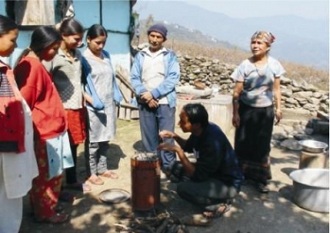New partnership aims to expand access to modern energy to 100m people by 2015
Source: Asian Development Bank, Jun. 17, 2009
The Asian Development Bank (ADB) has launched an Energy for All Partnership that aims to provide access to modern energy to an additional 100 million people in the Asia-Pacific region by 2015.
More than 800 million people in the region have no access to energy, and nearly 1.8 billion people still rely on traditional biomass fuels to meet their cooking and heating needs. It’s estimated that more than 1.5 million people, mostly women and children, die every year because of the indoor air pollution from the use of biomass fuel.
“For households without energy, the benefits of access are immediate and life-changing,” said Ursula Schaefer-Preuss, ADB’s Vice-President for Knowledge Management and Sustainable Development. “The benefits of modern energy extend across the spectrum of human development, from improved health, education, and social equality, to increased economic opportunity and higher agricultural productivity.’
The Energy for All Partnership was launched at ADB Headquarters in Manila during Clean Energy and Climate Week 2009, which aims to advance climate change and clean energy solutions in the region.
Ms. Schaefer-Preuss, speaking at the launch, said the Energy for All Partnership will emphasize low cost, environmentally friendly technologies and innovative financing mechanisms that will enable even the poorest households to gain access to energy. This will have a significant impact on all households, especially on women and children, particularly regarding their health security.
The Energy for All Partnership will support an initial phase of six working groups – on domestic biogas, solar lanterns, liquid petroleum gas (LPG), financing for energy services, energy enterprise development, and the Pacific region – that will design and implement programs in high-impact areas such as increasing microfinance lending for energy investments, or replicating business models for private sector service delivery.
The new partnership is funded by ADB’s Energy for All Initiative, a regional technical assistance program that is supported by the Government of the Netherlands and which promotes access to reliable, affordable, and clean energy for the poor.
The Energy for All Partnership is guided by a steering committee that brings together partners from business, governments, NGOs, and international organizations, and includes ADB, e8, E+Co, GVEP International, the National Electrification Administration of the Philippines, ReEx Capital Asia, the Renewable Energy and Energy Efficiency Partnership (REEEP), Stichting Nederlandse Vrijwilligers (SNV) Netherlands Development Organisation, Sustainable Energy Association of Singapore, The Energy and Resources Institute (TERI), and the World Business Council on Sustainable Development. ADB will host the partnership’s secretariat for the next two years.
Christine Eibs-Singer, CEO of E+Co and co-chair of the Energy for All Partnership’s steering committee, emphasized the need for collaboration to yield greater impact. “Many organizations, from the multilateral to the local, are helping bring energy access to vulnerable communities,’ she said. ‘This partnership will leverage the work of partner organizations for greater impact and wider benefits.”
Source



